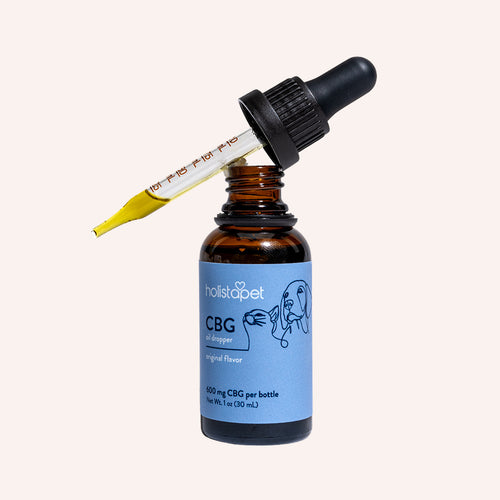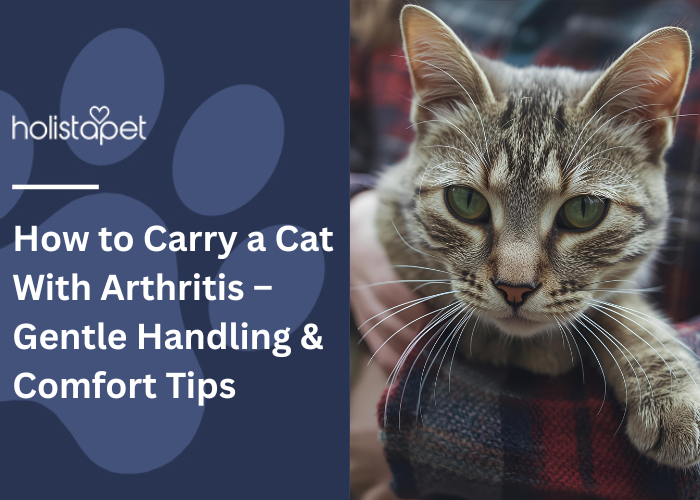Cats leap like tiny athletes, often reaching up to six times their height in one smooth spring. So when you spot your cat having trouble jumping onto the couch, the bed, or a windowsill, it feels alarming. Your once-confident acrobat now hesitates, and that shift can spark real concern.
You love seeing your cat conquer high places with ease, so sudden mobility issues stand out fast. This guide gives you clear answers and practical help. From spotting early signs to learning potential reasons behind the struggle, you’ll find tips that can bring your furry friend’s bounce back.

Why Is My Cat Having Trouble Jumping?
Leaping comes naturally to cats, and their bodies are built for it. Their back legs act like coiled springs, giving them the power to reach high spots with ease. A cat can often soar several times its body length without missing the mark. So when you notice your cat can't jump the way they used to, it’s worth paying attention.
Struggles with jumping aren’t always just part of getting older. They can be linked to soreness, irritation, or underlying medical conditions that affect mobility. Your role as a pet parent is to notice these early changes. Quick action helps keep your cat active, confident, and comfortable.
Common Causes of Jumping Problems in Cats
If your cat won't jump like before, several factors could be at play. Joint aches, muscle weakness, or extra weight are common culprits. Injuries, past accidents, or even balance issues can also affect mobility.
Spotting these problems early gives your cat the best chance to stay active and happy. Quick attention means fewer struggles reaching favorite spots and more comfort in daily life.
Arthritis and Joint Pain
One reason your cat may stop jumping is arthritis or joint pain. Age is the most common trigger, making senior cats especially prone to arthritis. Injuries, poor diet, or genetics can also play a role. These factors cause the joints to stiffen and lose their smooth motion.
Cats with joint aches often show signs beyond jumping problems. You may notice limping, stiffness after rest, or a slower climb up stairs. Some cats even groom less because it hurts to bend and stretch.
Muscle Weakness or Atrophy
Muscle weakness or atrophy can also explain why your cat struggles to jump. As cats age, their muscles lose strength, which is normal. But a young cat can also show weakness if illness or long periods of low activity slow down muscle development. With weaker muscles, your cat’s powerful leaps turn into clumsy attempts.
You may notice your cat moving more slowly, avoiding play, or showing less interest in climbing onto shelves or cat trees. Some cats wobble when walking or tire quickly. These are all signs that muscles are not working as they should.

Obesity and Excess Weight
Extra weight can make a cat’s jumps harder and less graceful. A cat is often considered overweight when their ribs are hard to feel or their waistline disappears, though some cats with solid builds are perfectly fine. Too much food, frequent treats, or little exercise are common reasons this happens in cats, just like with many other animals.
Carrying extra pounds puts more strain on joints and limits flexibility. This makes climbing and reaching high places a challenge. If your cat struggles to jump—or can’t jump anymore—their body weight may be slowing them down and causing mobility issues.
Injuries or Trauma
A cat’s sudden trouble jumping can point to injury or past trauma. Sprains or fractures in the front paws or hind legs often cause sudden changes in movement. Unlike gradual issues such as arthritis or weight gain, injuries appear without warning.
You may see swelling, limping, or a strong reaction when you touch a sore spot. Some cats hide, avoid handling, or cry when moving. Sudden behavior changes often signal discomfort from an accident or physical strain.
Neurological or Balance Issues
When arthritis, weight gain, or injuries aren’t the cause, neurological or balance problems may explain your cat’s jumping trouble. These conditions affect coordination and control of movement. Signs include head tilting, walking in circles, tremors, or odd eye movements.
At home, you can watch how your cat walks in a straight line or reacts to small shifts in position. These clues help, but cat owners should remember that only a veterinarian can confirm the problem and recommend safe care.
Signs to Watch for Beyond Trouble Jumping
Trouble jumping often signals more than a simple slowdown. It can point to discomfort or even health concerns that need quick attention. Looking for other signs helps you determine if the problem is serious.
-
Limping or Stiffness After Rest – Your cat may move awkwardly or take time to loosen up.
-
Hesitation or Repeated Attempts Before Jumping – They might pause or fail before finally making the leap.
-
Avoiding Favorite High Resting Spots – Cats that once claimed shelves or beds may stop trying.
-
Changes in Posture or Gait – Notice shifts in how they walk or sit.
-
Crying or Vocalizing When Attempting to Jump – Noise during movement often means discomfort.
How Vets Diagnose Mobility Issues in Cats
The best way to understand why your cat struggles with jumping is to visit a veterinarian. While you can observe symptoms at home, only a vet can provide a clear diagnosis and treatment plan.
-
Physical Exams and Joint Checks
Your vet will test flexibility, range of motion, and joint tenderness. They may gently bend and stretch limbs to check for stiffness.
-
X-Rays or Imaging for Arthritis or Injuries
X-rays help reveal fractures, joint changes, or hidden mobility issues.
-
Bloodwork to Rule Out Illness
Blood tests can detect infections, metabolic problems, or even kidney disease that affects strength and movement.

Treatment Options for Cats Having Trouble Jumping
Once a veterinarian finds the cause, treatment can be tailored to restore comfort and protect your cat’s ability to move with ease. Options often focus on comfort, strength, and long-term support.
-
Veterinary Medications and Pain Relief – Prescribed drugs may ease soreness or irritation, helping your cat regain mobility.
-
Weight Management for Overweight Cats – A balanced diet, smaller portions, and added activity can take pressure off joints.
-
Joint Supplements for Long-Term Support – Natural options like glucosamine, MSM, CBD, or turmeric may support joints, calm aches, and keep mobility steady.
Each step helps your cat jump with more confidence.
Natural & Holistic Comfort Support for Cats
Cats with mobility problems often benefit from gentle, natural options that soothe their bodies and help them relax. Holistapet offers a range of wellness products designed with care. Each item is grain-free, dairy-free, and free from artificial flavors or preservatives. We use CBD, hemp seed oil, and other natural ingredients. All are vegan and non-GMO, making them a thoughtful choice for your cat.
These products can help ease sore joints, support mobility, and promote calmness. They’re also easy to use and made with flavors cats enjoy. Here are the main options:
-
CBD Oil for Cats – Comes with a dropper for precise use. You can give it directly or mix it into food. Available in salmon, chicken, or original flavor.
-
CBD Soft Chews for Cats – Gentle on teeth and easy for older cats to eat. Offered in salmon flavor.
-
CBD Cat Treats – Each bite has 2mg of CBD. Available in salmon or chicken flavor for easy dosing.
Lifestyle Adjustments to Help Your Cat
Simple changes at home can make life easier for a cat that struggles to jump. These adjustments can reduce strain and help your cat stay active and comfortable.
-
Pet Ramps and Steps to Reduce Jumping Strain – Provide ramps or stairs so your cat can reach beds or couches without stress.
-
Soft Bedding and Easy-Access Resting Spots – Offer cozy beds placed low to the ground for easy use.
-
Gentle Play and Exercise to Maintain Muscle Strength – Use toys and short play sessions to keep muscles active.
-
Non-Slip Rugs for Safe Movement – Rugs or mats on smooth floors give better traction and prevent slips.
When to See a Vet Urgently
Sometimes home care is not enough, and a quick vet visit is the best choice. Certain warning signs mean your cat may need immediate medical attention.
-
If Your Cat Suddenly Cannot Jump at All – A sudden stop in mobility often points to a serious problem or injury.
-
If They Cry Out in Pain When Moving – Vocal sounds during movement may signal fractures or severe joint disease.
-
If Appetite or Water Intake Drops Suddenly – Skipping meals or refusing water can show hidden illness.
-
If Weight Loss or Lethargy Occurs – Noticeable loss of weight or constant fatigue may signal chronic conditions.
Final Thoughts – Helping Cats With Jumping Problems
When your cat struggles to jump, it often means more than slowing down with age. It can signal aches or health issues that need your attention. With the right vet care, lifestyle changes, and natural options, you can make a big difference.
Products like Holistapet Joint Support Chews or CBD Oil for Cats may add comfort and support. Your love, patience, and quick action help keep your cat happy, active, and full of life.


 CBD Oil for Cats - Fast Acting
CBD Oil for Cats - Fast Acting
 CBD Cat Treats - Easy Dose
CBD Cat Treats - Easy Dose
 CBD Calming Chews for Cats - Highly Rated
CBD Calming Chews for Cats - Highly Rated
 CBG Oil for Dogs and Cats - Loved by Thousands
CBG Oil for Dogs and Cats - Loved by Thousands





Leave a comment
All comments are moderated before being published.
This site is protected by hCaptcha and the hCaptcha Privacy Policy and Terms of Service apply.